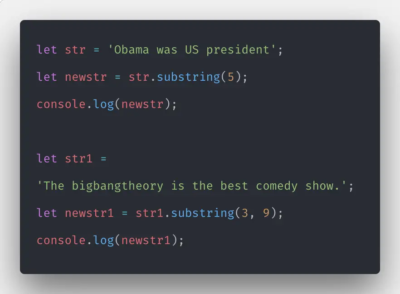
Introduction
The ‘delete’ operator in programming languages is a powerful tool for removing properties from objects or deleting entire objects. However, it is essential to understand that the operand of a ‘delete’ operator must be optional. In this article, we will delve into the significance and usage of the optional operand in relation to the ‘delete’ operator. By the end, you’ll have a clear understanding of why this concept is crucial in coding and how it can enhance your programming practices.
Overview of the ‘delete’ Operator
The ‘delete’ operator is a fundamental component in programming languages, allowing developers to delete properties or objects from memory. It is commonly used in languages like JavaScript, where objects play a central role. When used correctly, the ‘delete’ operator helps manage memory resources effectively and maintain cleaner codebases.
Understanding the Optional Operand
The operand of the ‘delete’ operator refers to the target entity that should be removed. It can be either a property of an object or the object itself.
Leveraging the optional operand in the delete operator can optimize JavaScript code efficiency, playing a crucial role in web performance and, indirectly, SEO success. See the connection with link-building strategies.
However, it is important to note that the operand must be optional. This means that the operand should be an expression that evaluates to a property name or object reference. It cannot be a literal value or an expression that evaluates to a value.
Importance of Optional Operand
The optional operand is crucial for the ‘delete’ operator because it specifies the target entity that needs to be deleted. By making the operand optional, programming languages provide flexibility in deciding what should be removed. This enables developers to dynamically remove properties or objects based on runtime conditions, enhancing the versatility of their code.
Examples of Using the Optional Operand
Deleting an Object Property
In this example, the optional operand (user.age) is used to delete the ‘age’ property from the ‘user’ object. By removing the property, we can modify the object’s structure based on specific requirements.
Deleting an Entire Object
In this case, the optional operand (data) represents the entire object. By using the ‘delete’ operator with the optional operand, we can delete the ‘data’ object completely, freeing up memory resources.
Best Practices for Utilizing the ‘delete’ Operator
When using the ‘delete’ operator with an optional operand, it’s important to follow certain best practices to ensure efficient and reliable code. Here are some guidelines to consider:
- Always check if the property exists: Before deleting a property, verify its existence to prevent unexpected errors or exceptions.
- Avoid deleting global objects: Deleting global objects can lead to unintended consequences and may disrupt the expected behavior of your code.
- Avoid using the ‘delete’ operator excessively: Overusing the ‘delete’ operator can result in slower code execution and unnecessary memory management overhead.
- Consider alternative approaches: In some cases, there may be alternative approaches, such as setting the property to null or undefined, that can achieve the desired outcome without using the ‘delete’ operator.
Common Pitfalls to Avoid
While working with the ‘delete’ operator, it’s crucial to be aware of common pitfalls that can lead to unexpected issues. By understanding these pitfalls, you can avoid potential bugs and ensure the proper usage of the ‘delete’ operator. Here are a few common pitfalls to watch out for:
- Incorrect usage of optional operand: Ensure that the optional operand refers to a valid property or object that can be deleted.
- Forgetting to check the return value: The ‘delete’ operator returns a boolean value indicating whether the deletion was successful. Neglecting to handle this return value can lead to errors in your code logic.
- Deleting properties of built-in objects: It is generally recommended to avoid deleting properties of built-in objects, as it can result in unpredictable behavior.
Frequently Asked Questions (FAQs)
No, the ‘delete’ operator cannot delete variables. It can only delete properties of objects or entire objects themselves.
While the ‘delete’ operator removes properties or objects, it does not directly free up memory. Memory management is typically handled by the programming language’s runtime environment.
If you attempt to delete a property that doesn’t exist, the ‘delete’ operator will simply return true without any actual deletion taking place.
Yes, the ‘delete’ operator can delete properties inherited from prototypes. However, the actual deletion depends on the property’s configurability, which may vary between different objects.
No, once a property or object is deleted using the ‘delete’ operator, it cannot be easily restored. Therefore, it is important to use the ‘delete’ operator with caution.
Conclusion
Embarking upon the winding journey of programming intricacies, we delve deep into the abyss of knowledge to unravel the enigmatic essence of the optional operand intertwined with the ever-mysterious ‘delete’ operator. Brace yourself, for we are about to embark on a voyage that shall redefine your coding prowess.
Ah, behold the optional operand, a mystical force that grants developers the formidable power to dynamically obliterate properties or objects with surgical precision. Its presence, dear reader, opens the doors to a realm where conditions govern the fate of data, and coding becomes an art of creation and destruction intermingled.
But tread with caution, for even the mightiest of powers can be wielded with folly. As we navigate this treacherous landscape, let us navigate the treacherous pitfalls that lie in wait, threatening to unravel our harmonious code. Mindful adherence to the sacred commandments of best practices shall be our guiding light, ensuring that our code remains robust, impervious to errors, and as reliable as the celestial stars.







